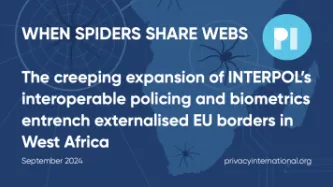Advanced Search
Content Type: Examples
In an interview conducted by the Los Angeles Unified School District’s investigative team, Chris Whiteley, the former senior director of software engineering at AllHere, explained his concerns with the security and privacy aspects of the design of “Ed”, an AI chatbot intended to assist students. Whiteley says the chatbot placed students’ personally identifiable information at risk by including it in all chatbot prompts, even when the data wasn’t relevant. District leaders need to conduct…
Content Type: Examples
The United School Administrators of Kansas, who represent more than 2,000 administrators in the state, are partnering with Seattle-based Indicio to install its Indicio Proven product, which will issue and verify transcripts and other records with ID verification.Link to articlePublication: Biometric UpdateWriter: Joel R. McConvey
Content Type: Examples
Los Angeles public schools have turned off an AI chatbot custom-designed to help parents and children navigate the school system after only three months because AllHere, which created it, mostly shut down. The information the chatbot dispensed is still available on the school’s platform, and the district intends to bring it back once officials figure out how to proceed. The school’s contract was worth $6 million over five years; about half it had been paid.
Link:LAUSD shelves its hyped AI…
Content Type: Examples
Public documents show that US school districts have for years been buying phone cracking tools from companies like Cellebrite and Oxygen Forensics. The equipment enables school district employees to search students’ personal devices. In one example, the Los Angeles Unified School District says its team uses its Cellebrite device to investigate complaints about employee misconduct against students. Many questions remain about how these devices are used: what justification is needed for searches…
Content Type: Examples
Schools in Hyderabad, the capital of the Indian state of Telangana, are using facial recognition to take morning attendance. Telangana is also using facial recognition to pay pensions, renew driving licences, evoting, and deter crime. Adoption was partly fueled by fear of spreading covid-19 through fingerprints. There are now 370,000 cameras in Hyderabad, controlled from a new command-and-control centre, and about 925,000 across Telangana. Link to the article Publication: The…
Content Type: Examples
The United School Administrators of Kansas, who represent more than 2,000 administrators in the state, are partnering with Seattle-based Indicio to install its Indicio Proven product, which will issue and verify transcripts and other records with ID verification.Link to articlePublication: Biometric UpdateWriter: Joel R. McConvey
Content Type: Examples
The Delhi government is expected to introduce facial recognition in schools in order to improve attendance, which is hovering at 65-70%. The government also proposes to provide parents with monthly attendance reports and introduce monthly and weekly tests in order to keep students engaged. Educators say that the solution to failing should be pedagogical rather than administrative. Link to the article Publication: Indian ExpressWriter: Vidheesha Kuntamalla
Content Type: Examples
A paper links depth of semantic encoding (which is important for reading comprehension) to reading text on paper rather than on a screen. This link was made after studying high-density EEG (which records brain activity) while 59 middle school students completed single-word semantic judgment tasks after reading passages of text. Link: Middle-schoolers’ reading and processing depth in response to digital and print media: An N400 studyPublication: BioRxivPublication date: 2023-09-01Writer:…
Content Type: Examples
With the use of ChatGPT already well established among students technology companies are coaching teachers on using AI tools to save substantial time on tasks such as grading, providing student feedback, and planning lessons, which reports say take up to 50 hours a week. Teachers are uncertain; planning lessons is one of the more creative parts of the job, and students crave human feedback. Link to the article Publication: MIT Technology ReviewWriter: James O'Donnell
Content Type: Examples
A study conducted by neuroscientists based on a sample of 59 children aged ten to 12, the period critical in reading development, finds that paper has a clear advantage over screens for “deeper reading”. The work aligns with other research conducted by social scientists with similar findings. Nonetheless, US schools are converting to computerised test-taking and electronic textbooks.Link: A groundbreaking study shows kids learn better on paper, not screens. Now what?Publication:…
Content Type: Examples
Skeptics at an education conference pushed parents to question AI vendors' pitches instead of gambling children's privacy for promises of increased on-campus safety. Even so, schools are increasingly upgrading surveillance systems to incorporate AI and biometrics in the name of safety. Link to article Publication: Biometric UpdatePublication date: 2024-03-07Writer: Jim Nash
Content Type: Examples
Fifty-five percent of US parents say they need financial help to buy the technology their children need for school, according to a survey conducted by EcoATM Gazelle, which sells refurbished devices.
Link: Parents are going into credit card debt buying back-to-school tech, survey says
Publication: Quartz
Writer: Ben Kesslen
Content Type: Examples
The data protection officer for Rhineland-Pfalz says that parental agreement is not required when schools use ChatGPT, even when the students are underage. However, the terms and conditions attached to OpenAI’s licence for third parties for ChatGPT say parents must give consent. Link: Datenschützer: Eltern müssen KI in der Schule nicht zustimmen Publication: Table MediaWriter: Table Briefs
Content Type: Examples
A platform that will serve as a central data repository for India's One Nation One Student ID is due to start operation in February 2024. The 12-digit student ID (Automated Permanent Academic Account Registry) is liked to students' Aadhaar biometric IDs and has so far been issued to 20 million students in higher education. The new database will eventually aggregate data that until now has been held separately by various educational institutions. The Union government has directed that full…
Content Type: Examples
The Indian online educational services company Byju, which sells a live online one-on-one learning platform in the US, UK, Brazil, Indonesia, and Mexico, has aggressive plans to expand in the US and is seeking acquisitions there and in the UK and Australia. In 2021, it acquired the digital reading platform company Epic and the K-12 creative coding platform Tynker, giving it access to over 100,000 schools and 60 million pupils.Link: Byju’s plan to enter the global edtech market and what that…
Content Type: Examples
Both global and US investment in edtech has dropped sharply since its peak in 2021, when Coursera, Udemy, and Duolingo all went public, even though both enrollment numbers and adoption of edtech are increasing. India's BYJU provides an example: valued peaked at $22 billion in 2022, in 2024 its value has dropped to $1 billion. From here, investment is more likely to accrue to startups leveraging AI for education. Link to the article Publication: CrunchbaseWriter: Joanna Glasner
Content Type: Examples
Like around 1,500 other school districts, Columbus City Schools, the largest school district in the US state of Ohio, has begun partnering with the Texas-based safety technology company Gaggle. Gaggle monitors students’ devices for signs of potential concerns such as self-harm, depression, or cyberbullying. Columbus City Schools’ 47,000 middle and high school students are not allowed to opt out; during a pilot from April 2022 to December 2023 Gaggle’s Safety Team looked at 3,942 pieces of…
Content Type: Examples
While the edtech sector continues to grow - projections are that it will reach US$132.4 billion globally by 2032 - the educational value of edtech remains unknown and may even be negative. Tech developers should collaborate with scientists who study learning in order to create more effective designs. Research studies should pre-register, espouse transparency and integrity, and work to standardised evaluation criteria and standards. Link to the article Publication: The…
Content Type: Examples
An assessment camp for disabled children who attend government schools run by the Samagra Shiksha integrated scheme for education in the Indian state of Telagana required eligible children to bring with them a state government-issued disability certificate indicating a more than 40% disability, two passport-sized photographs showing their disability, and a Unique Disability ID card or receipt for applying for one. Those without a certificate or ID card were asked to bring instead a disability…
Content Type: Examples
The ACLU of Maine has criticised the Caribou school district and the Pennsylvania-based biometric education company IdentiMetrics for mishandling a contract by not laying out clear plans for protecting student data. The contract was to supply a biometric finger scanner to track student attendance data; it was cancelled when parents raised concerns about data privacy. IdentiMetrics have further contracts with thousands of other school districts in 48 states. Link to articlePublication: The…
Content Type: Examples
Numerous research efforts are developing facial recognition systems for use in classrooms. In one example, researchers at Guilford College are designing a system for classroom management that will use multiple cameras to take attendance, monitor students’ activities, and detect their emotional states, believing that it will reduce stress for teachers. While such use is not illegal and Guilford’s researchers say protecting student privacy is an important part of their design, the ethics and the…
Content Type: Examples
The 746 KGBV schools in the Indian state of Uttar Pradesh say the schools’ facial recognition attendance system has helped improve both students’ and teachers’ attendance. KGBVs are residential schools intended to educate girls from impoverished backgrounds.Link: Face-recognition Tech helps KGBV in record attendance Publication: Times of IndiaPublication date: 2023-11-09Writer: Isha Jain
Content Type: Examples
The Newport-Mesa [California] Unified School District Board of Education approved a new AI-enhanced surveillance system from Everon LLC (formerly ADT Commercial) that includes automated cameras, software that can spot after-hours intruders, read car licence plates, and monitor for signs of emergencies, including gun shots. The system can automatically notify the police, fire, and school authorities and speed the process of reviewing recorded video footage.
Link: School board approves new AI-…
Content Type: Examples
Schools in New Jersey and Wisconsin are installing Singlewire Software’s Visitor Aware, visitor management software that includes facial recognition and ID scanning, and collects visitors’ names, ID documents, date of birth, address, gender, and a facial photo, which it uses to check against the National Sex Offenders Registry, most-wanted lists from the FBI and Interpol, and other such lists. It does not check immigration databases, or check for criminal history or outstanding warrants.Link to…
Content Type: Long Read
INTRODUCTION
In recent years, major tech platforms have been rapidly evolving their business models. Despite their dominance in various markets, tech giants like Google and Meta are venturing into new territories to expand their user base. One of the most striking ventures has been their foray into the "connectivity market" through substantial, and occasionally unsuccessful, investments in network infrastructure.
Many tech companies are investing resources into network infrastructure, either…
Content Type: Long Read
Our briefing, “When Spiders Share Webs: The creeping expansion of INTERPOL’s interoperable policing and biometrics entrench externalised EU borders in West Africa”, explores the concerning human rights implications of the use of interoperable data-driven policing capabilities and biometric technologies in West African countries rolled out by the International Criminal Police Organisation (INTERPOL)’s European Union (EU)-funded West African Police Information System (WAPIS) programme. We make a…
Content Type: Legal Case Files
In September 2019, Privacy International filed 10 access to documents requests to EU bodies regarding the transfer of surveillance capabilities to non-EU countries. The requests seek documents providing information on the transfer of personal data, surveillance technology, training, financing, and legislation to non-EU countries. These are the disclosures so far from the DG International Cooperation and Development (DEVCO) – currently DG International Partnerships (INTPA).



